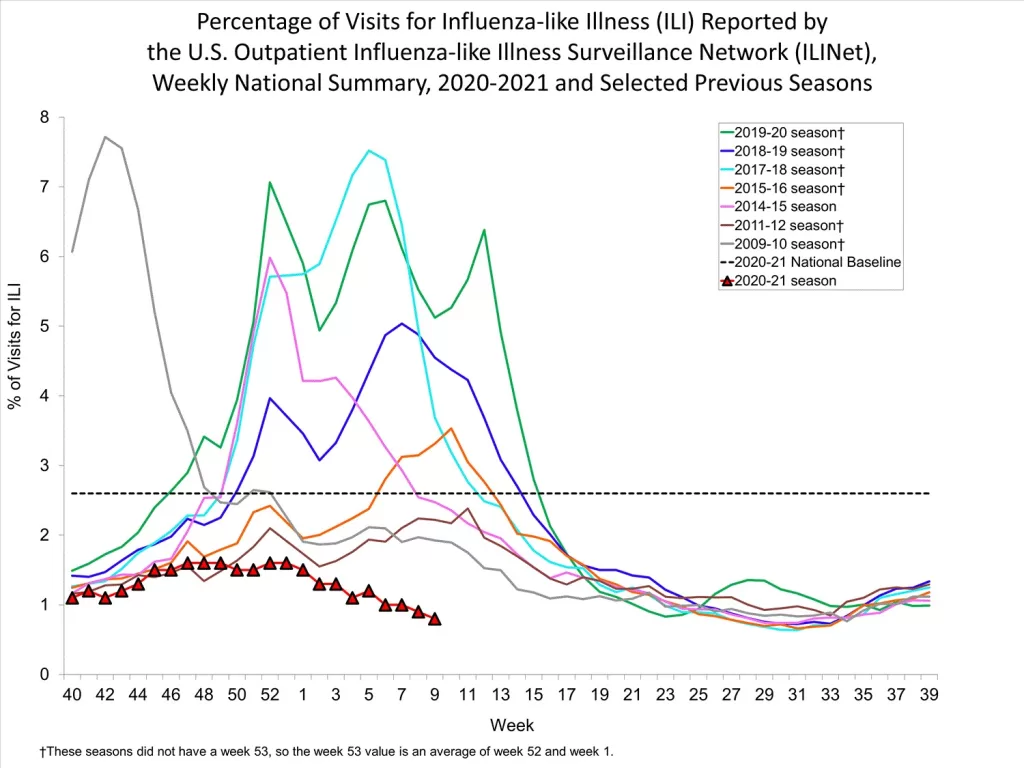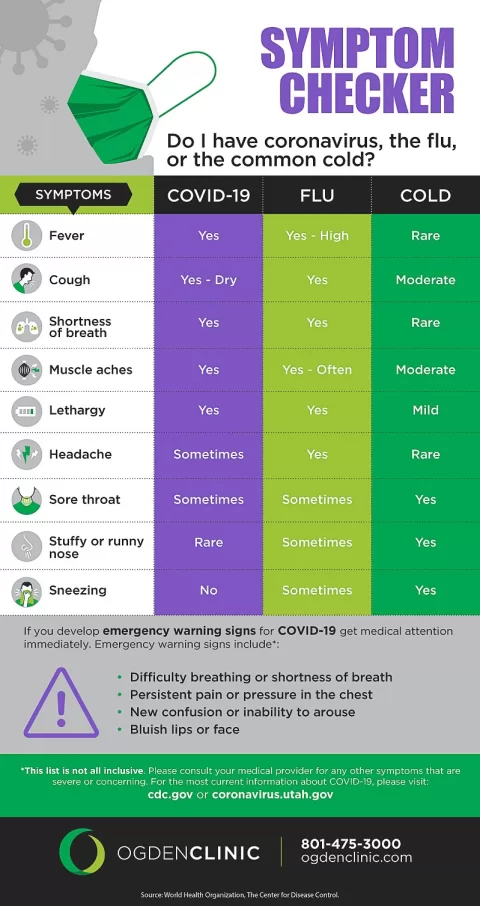Flu levels have surged to alarming heights this year, now reported at the highest since the 2009 pandemic. According to the latest CDC flu report, influenza cases continue to escalate, creating concerns about the severity of this flu season. With nearly 8% of outpatient visits attributed to respiratory illnesses caused by the flu, experts are sounding the alarm over potential “vaccine hesitancy” affecting vaccination rates. The CDC’s data indicates this worrying trend as adult and pediatric flu vaccination numbers decline significantly. As we approach the peak of influenza activity, staying informed with flu season updates is crucial to avoiding the health risks associated with this uptick in infections.
As the winter season progresses, many are witnessing an unprecedented rise in influenza activity across the nation. Oftentimes referred to simply as the flu, this viral illness has reached near-epidemic proportions, echoing the difficulties seen during the 2009 outbreak. Reports indicate that flu cases are heavily impacting emergency rooms and healthcare providers, marking this season as particularly severe. Public health officials are closely monitoring trends, especially amid growing vaccine skepticism among the community. Understanding these dynamics is vital for effectively mitigating the impact of flu infections this winter.
Current Flu Levels in 2025: A Dramatic Rise
According to recent reports, flu levels in 2025 are alarmingly high, marking the most severe outbreak since the 2009 pandemic. The Centers for Disease Control and Prevention (CDC) indicated that approximately 8% of outpatient visits now involve patients suffering from influenza symptoms, signifying a surge in respiratory illnesses across the nation. This uptick reflects a more intense viral circulation compared to previous years, as many states report their flu activity reaching unprecedented levels.
The escalation of influenza cases is notable, with data indicating that nearly 32% of flu tests administered last week returned positive results. This stark contrast to the previous season’s peak, where only 18.2% were positive, emphasizes the severity of the current flu season. The CDC highlights that the ramifications of this increases are significantly impacting healthcare systems, with emergency rooms preparing for an influx of patients.
Understanding Vaccine Hesitancy During the Flu Season
Vaccine hesitancy has emerged as a critical factor in the current flu season, with reports suggesting that immunization rates among children are at their lowest level in six years. Health experts, including pediatric specialists, are expressing concern that the reluctance to vaccinate could be exacerbating the current flu crisis. With fewer than half of Americans vaccinated against the flu, this skepticism is likely contributing to the increased number of cases being reported.
The implications of vaccine hesitancy extend beyond individual health, impacting public health as a whole. The CDC warns that a lack of vaccine uptake can lead to not only higher illness rates but potential complications, particularly among vulnerable populations like children, who may experience severe symptoms if infected. Educational campaigns aimed at reducing fears surrounding the flu vaccine are crucial to mitigate these risks.
CDC Flu Report: Tracking Influenza Cases
The CDC’s latest flu report underscores the alarming trend of rising influenza cases across the United States, with the agency utilizing extensive surveillance data to monitor the situation. The report indicates that all but a few states are currently experiencing high or very high levels of flu-like illness, drawing comparisons to historical peaks recorded during previous pandemics.
Flu season updates from the CDC paint a continued picture of concern, highlighting the importance of ongoing monitoring and data collection. The information gathered serves not just to inform the public but also aids in guiding healthcare responses to manage resources effectively. Despite the challenges of vaccine mismatches and declining immunization numbers, vigilance remains essential.
Impact of the Flu on Children’s Health During 2025
Children’s health is especially vulnerable during this heightened flu season, with reports indicating that pediatric hospitals are overwhelmed with influenza cases. Specialists warn that influenza can lead to serious conditions such as seizures and even brain inflammation in rare cases. Alongside rising illness rates, the importance of vaccination becomes even more critical for this demographic, given their susceptibility to severe outcomes from the flu.
The current statistics are alarming, with reports from healthcare providers confirming a staggering 3,000 positive flu cases in children at some facilities last week alone. This worrying trend calls for increased awareness among parents regarding the flu virus and the vital role flu vaccinations can play in protecting their children from severe illness and complications.
Echoes of the 2009 Pandemic: A Reflection on Flu Trends
As influenza cases soar to levels not seen since the 2009 pandemic, public health officials are drawing parallels to past outbreaks. The current flu season’s severity emphasizes the need for robust public health strategies and effective communication to ensure communities remain informed about preventive measures.
Unlike the unique viruses behind the 2009 swine flu outbreak, current data suggests that the flu cases are predominantly from seasonal variants. This observation offers some reassurance, yet it also urges the public to remain vigilant, particularly in educating themselves about vaccination and its critical role in minimizing the impact of influenza outbreaks.
Navigating through Flu Season Updates and Recommendations
As the flu season progresses, continuous updates from health authorities like the CDC are essential in keeping the public informed. Recent recommendations highlight the importance of vaccination as new data suggests that this year’s flu vaccine may be poorly matched for some populations, further complicating the effort to control the illness.
Healthcare providers emphasize that staying informed about flu season updates can significantly impact individual and community health. By adapting to new information regarding vaccine efficacy and flu activity levels, individuals can make more informed decisions about their health and wellness throughout this challenging season.
The Importance of Public Education on Influenza Risks
Public education is paramount in combating the flu epidemic we are currently witnessing. As health officials relay information about the impact of influenza and the need for vaccinations, it becomes crucial for individuals to be proactive in seeking knowledge about flu risks and prevention strategies. Understanding how flu can lead to severe complications, especially in children, can drive better health behaviors in communities.
Incorporating real-life scenarios and statistics into these educational efforts can help demystify the concerns surrounding the flu vaccine. For instance, by explaining the mechanics of how vaccines work and the benefits of community-wide immunity, public health campaigns can effectively combat vaccine hesitancy and encourage higher participation in vaccination drives.
How State-Specific Efforts Are Tackling the Flu Crisis
States across the U.S. are undertaking various initiatives to combat the rising flu levels as reported by the CDC. From outreach programs to provide vaccinations to underserved populations to information campaigns aimed at educating the public on flu prevention, many states recognize the urgency of addressing this health crisis actively.
Local health departments are also ramping up collaboration with schools and community organizations to disseminate flu-related information and vaccination opportunities. These efforts aim not only to increase vaccination rates but also to foster a community spirit focused on health and wellness during the challenging flu season.
The Role of Healthcare Systems in Managing Flu Surges
As flu levels have reached historic highs, healthcare systems are experiencing unprecedented pressure to provide care for patients with respiratory illnesses. Hospitals are mobilizing resources to handle the influx of flu cases, which may lead to challenges in providing timely care for all patients, particularly those with co-existing health conditions.
Efforts are being made to address these challenges, including expanding healthcare staffing, increasing access to urgent care facilities, and optimizing hospital protocols to manage the anticipated surge in flu cases. By ensuring that healthcare systems are prepared and responsive, the impact of the ongoing flu crisis can be more effectively managed.
Frequently Asked Questions
What are the current flu levels according to the CDC flu report?
According to the latest CDC flu report, flu levels are currently at their highest since the 2009 pandemic, with close to 8% of outpatient visits attributable to influenza. This spike in influenza cases marks a stark increase compared to recent years, indicating an alarming trend for the current flu season.
How does flu season in 2025 compare to the 2009 pandemic flu levels?
The flu season in 2025 has seen influenza activity levels soar to the highest since the 2009 pandemic flu. The CDC reports significant increases in both outpatient visits for flu-like illnesses and positive lab tests for influenza, highlighting the severity of this year’s outbreaks.
Why is vaccine hesitancy a concern during the current flu season?
Vaccine hesitancy is a significant concern during the 2025 flu season as it appears to contribute to the surge in influenza cases. The CDC indicates that vaccination rates, especially among children, are at their lowest in six years, which could exacerbate the severe flu season we are experiencing. Public health experts emphasize the importance of vaccination to curb the rising flu levels.
What are the flu season updates regarding influenza cases in 2025?
Updates from the flu season in 2025 indicate that influenza cases are at ‘very high’ levels across most states, with some states experiencing a peak. The CDC reports that 31.6% of influenza tests are positive, nearly double last season’s peak, highlighting a worrisome trend in flu levels.
How can the public stay informed about flu season updates from the CDC?
The public can stay informed about flu season updates by regularly checking the CDC’s official website and following their social media channels for the latest flu levels, vaccine information, and safety recommendations during the flu season in 2025.
What impact did the 2009 pandemic flu have on flu levels today?
The 2009 pandemic flu has had a lasting impact on flu levels today, as the CDC reports indicate that current flu activity is the highest recorded since that time. Lessons learned from the 2009 outbreak, particularly regarding vaccination and public health responses, continue to shape how authorities address the challenges of influenza today.
What measures are being taken to address the high flu levels in 2025?
In response to the high flu levels in 2025, public health officials are focusing on vaccination campaigns to counteract vaccine hesitancy and increase flu shot uptake among the general population, particularly among children, to control the spread of influenza.
What should parents know about flu symptoms and risks for children in the current flu season?
Parents should be aware that flu symptoms can be severe in children, including fever, cough, and potential complications such as seizures or brain inflammation. With the current flu levels being high, timely vaccination and awareness of severe symptoms are critical for protecting children during this challenging flu season.
| Key Point | Details |
|---|---|
| Flu Levels | Flu cases are at the highest level since the 2009 pandemic, reaching nearly 8% of outpatient visits. |
| CDC Reports | The latest data released by the CDC indicates that influenza activity is ‘high’ or ‘very high’ in most states as of February 6, 2025. |
| Vaccine Hesitancy | Vaccination rates among children are the lowest in six years, contributing to the severity of this flu season. |
| Emerging Concerns | There are reports of unusually high hospitalizations among children, with potential severe complications like seizures. |
| Comparative Metrics | 31.6% of influenza tests were positive last week, significantly higher than last year’s peak of 18.2%. |
| Current Trends | Influenza infections are likely increasing in 15 states, but some states might have peaked. |
Summary
Flu levels are currently at the highest they have been since the 2009 pandemic, indicating a significant public health concern. With the CDC reporting nearly 8% of outpatient visits related to flu, and vaccination rates amongst children plummeting, the severity of this flu season is exacerbated by a growing vaccine hesitancy. Health experts urge increased awareness and proactive measures to manage the spread, especially among vulnerable populations.
The content provided on this blog (e.g., symptom descriptions, health tips, or general advice) is for informational purposes only and is not a substitute for professional medical advice, diagnosis, or treatment. Always seek the guidance of your physician or other qualified healthcare provider with any questions you may have regarding a medical condition. Never disregard professional medical advice or delay seeking it because of something you have read on this website. If you believe you may have a medical emergency, call your doctor or emergency services immediately. Reliance on any information provided by this blog is solely at your own risk.







